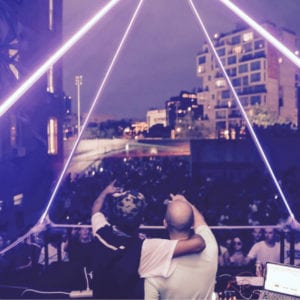Public art in Denmark is a series by Copenhagen-based curator Amalie Frederiksen, owner of Another Public Art Agency
Do you recognize this: When travelling, you always have an extra eye out for public art. It could be in the subway, walking the streets or finding yourself out in nature, you are looking for art even if you know you are probably not going find any. Then you will start imagining. How could art add extra layers to this specific context? What would be an exciting way to implement art in this situation, this atmosphere, or this visual structure? I do that all the time.
I’m mainly out for the kind of art that is mingling in and interacting with people’s behaviors and daily life. To raise awareness of how the structure of a space is influencing us or to create a different space where another way of being is made possible. It’s magic when it happens to pop up out of the blue.
But it happens rarely because it is not the agenda of these artworks to be found and admired. Rather they want to function in symbiosis with the people who randomly cross their field. Still, you, as the art lover that you are, do of course want to find these spaces where art and people shape a life together.
That’s why I made a guide that takes you through the hidden art landscape of Denmark. And I swear, this is places you would never go unless you knew they were enchanted by art.
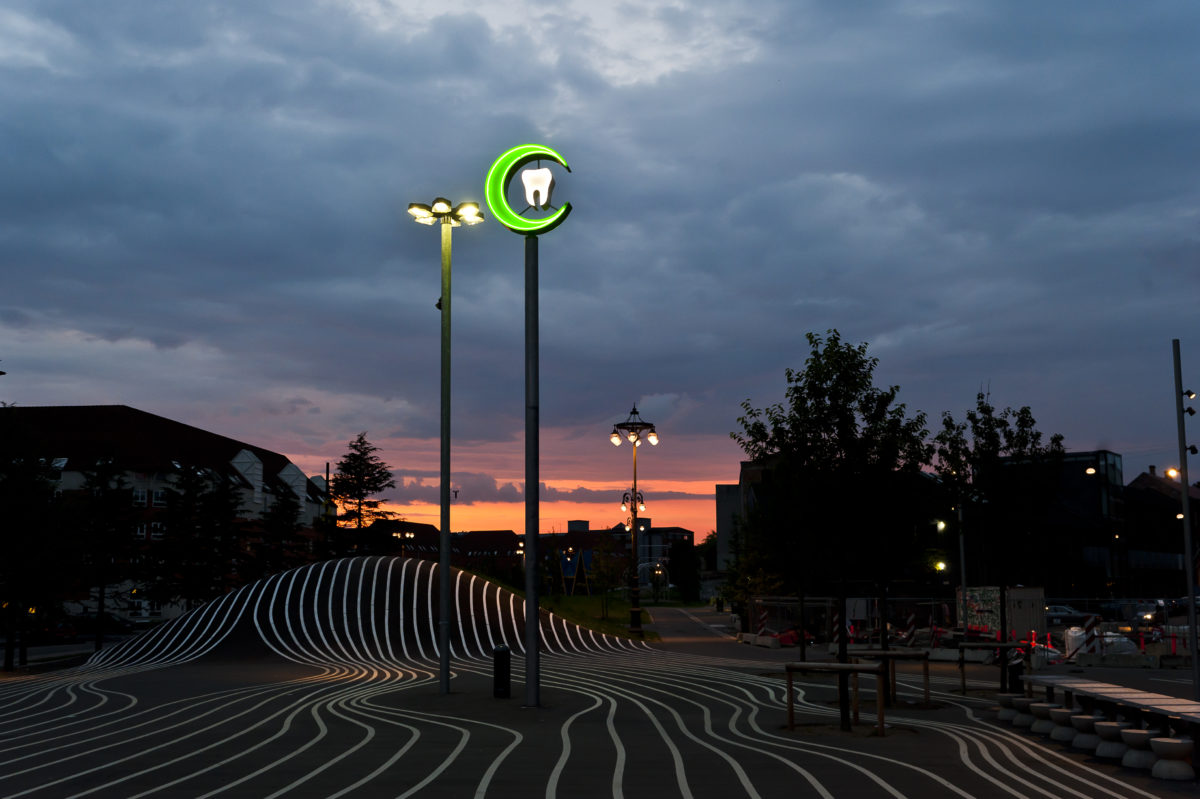
1. Superkilen
This place is celebrated online because of its red, green and black areas as well as cool color lighting that makes it look good on Instagram, Google and in music videos. But there is more to the park than appealing colors and viral energies. If you take a bike ride through the park you will notice a diversity of somewhat familiar objects placed around the park. At first, it might look like random objects like bins, benches, bike racks, street lights, manhole covers, fitness and play tools, but it’s actually objects brought home from all over the world, selected by people from the surrounding neighborhood that comes from more than 50 different nationalities. Superkilen is an urban object portrait of the hood asking to be shared and used by everyone.
The concept around the urban objects in Superkilen is made by the art collective Superflex in 2012.
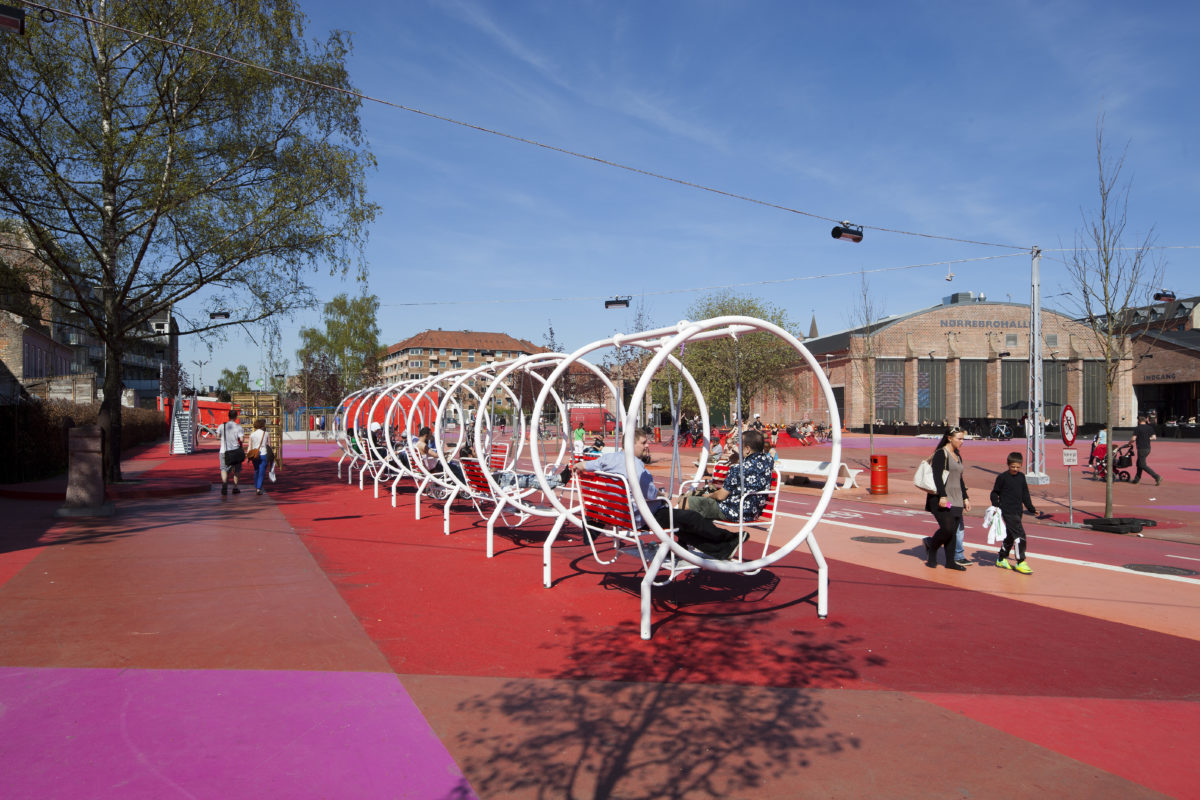
2. Gersagerparken
In a tunnel in a housing area named Gersagerparken, you find an artwork that guides you safe to the other end. The dark and unpleasant tunnel has been transformed into a wild, interactive space with sounds, light and striped graffiti made by the residents. The ceiling has sensors that change the light in the tunnel between green, pink and blue as you move. And the big red buttons on the walls can spread sound like an echo through the long room. In this way, the otherwise somewhat boring and scary trip through the passage becomes a festive and colorful event in the midst of everyday life and it gives people in the area something special to share.
The artwork in the tunnel is called “HjerteMix” and is made by the artists Karoline H. Larsen and Helle Hove in 2016. “HjerteMix” won the audience award for best public art work in Denmark in 2018.
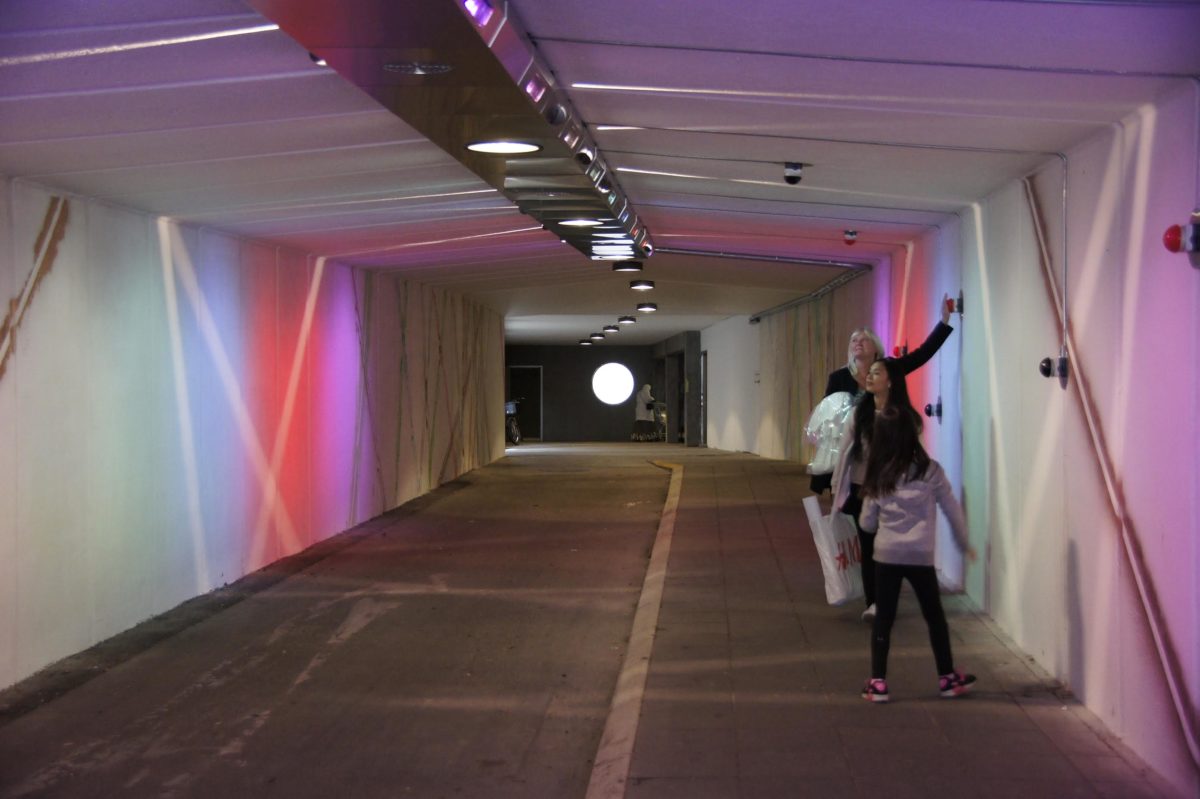
3. Ringe
When you visit the small town Ringe you might hear some of the locals start speaking about an ‘art bench.’ If that happens, don’t hesitate to approach them and ask for the full story. Trust me, the people of Ringe are friendly and playful creatures, always welcoming strangers – like you! And the young ones are true party people. Actually they go to the ‘art bench’ every Friday to play techno, get drunk and have fun together. This may sound weird to you, but the fact is that the guy behind the ‘art bench’ architect Paul Ingemann, wanted it so. How cool is that – a public art work that you can party on?
The art bench’s real name is “Termini.” It was made by Paul Ingemann in 2015 and it came out with massive drama in the small town. But I will let the Ringe inhabitants tell you that story when you go there.
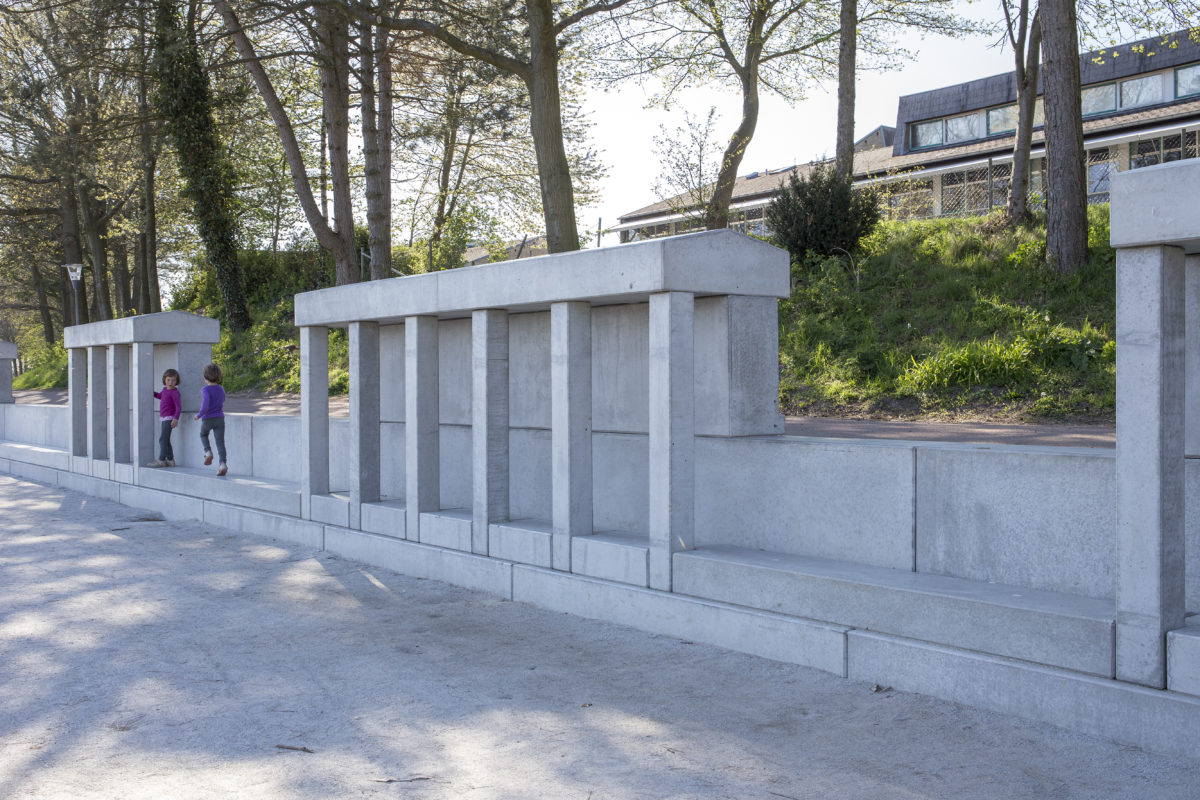
4. Hospital Sønderjylland
When entering this hospital, you will be met by local people from the surrounding community in the city of Aabenraa. All the columns are covered with large colorful portraits of kids, elders, pregnant women and hospital staff. Collectively they are welcoming you and creating a warm and friendly atmosphere where you never feel alone because you are always surrounded by people. This art installation also symbolizes the democratic aspect of the public hospital in Denmark made free and open for everyone due to the collective effort of the Danish tax system.
The installation at the hospital is made by the artist Ane Mette Rue in 2015 while the hospital was built.
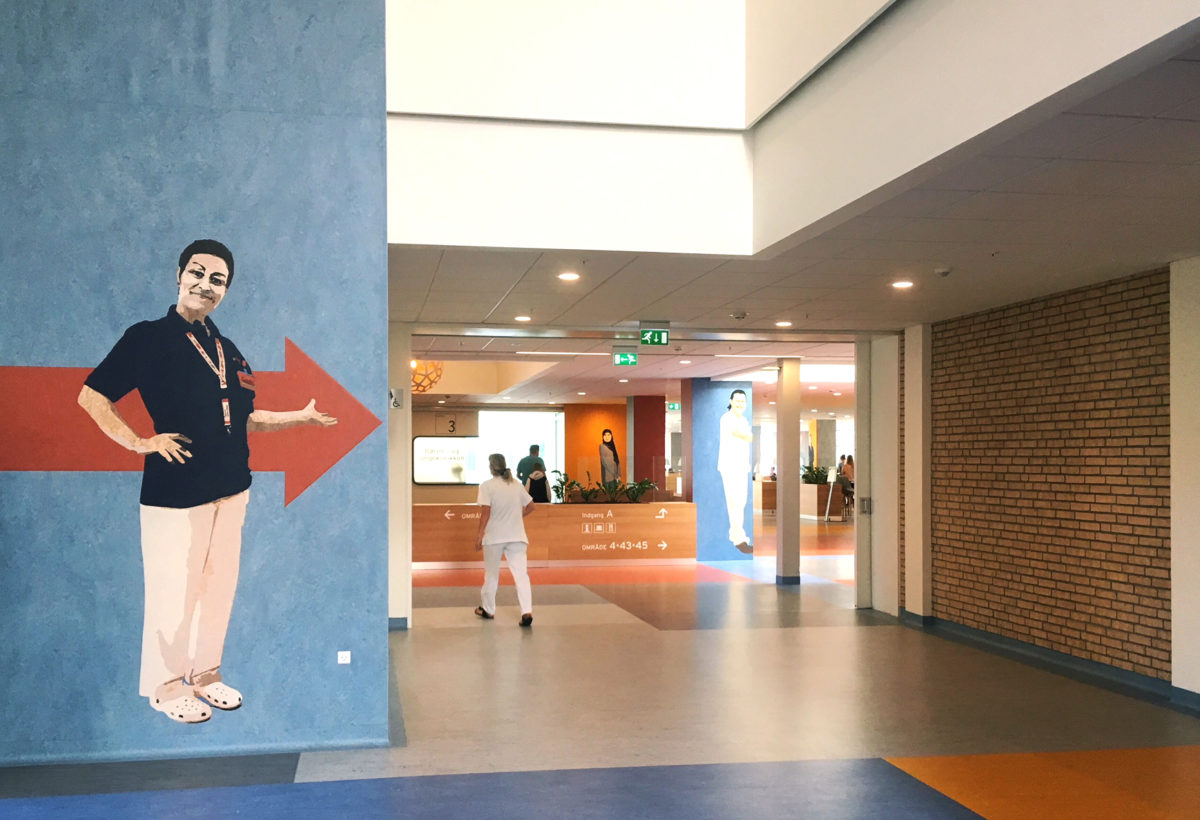
5. Frederiksbjerg School
In a public school in Denmark’s largest biggest city Aarhus, you can find art disguised as things you would normally see placed around in a school, like a jacket hanging on a row, milk boxes, soda capsules, cigarette butts, a broom and a school bag left alone in a corner. The objects are all made in painted metal, scaled up a bit in size to let you know there is something different going on with them and seduce you to get really close and touch it. The kids in school like to play around on the objects and they use them as meeting spots or to trigger their imagination to make up a new game. The artworks at Frederiksbjerg Skole is made by the artist Rose Eken in 2016.
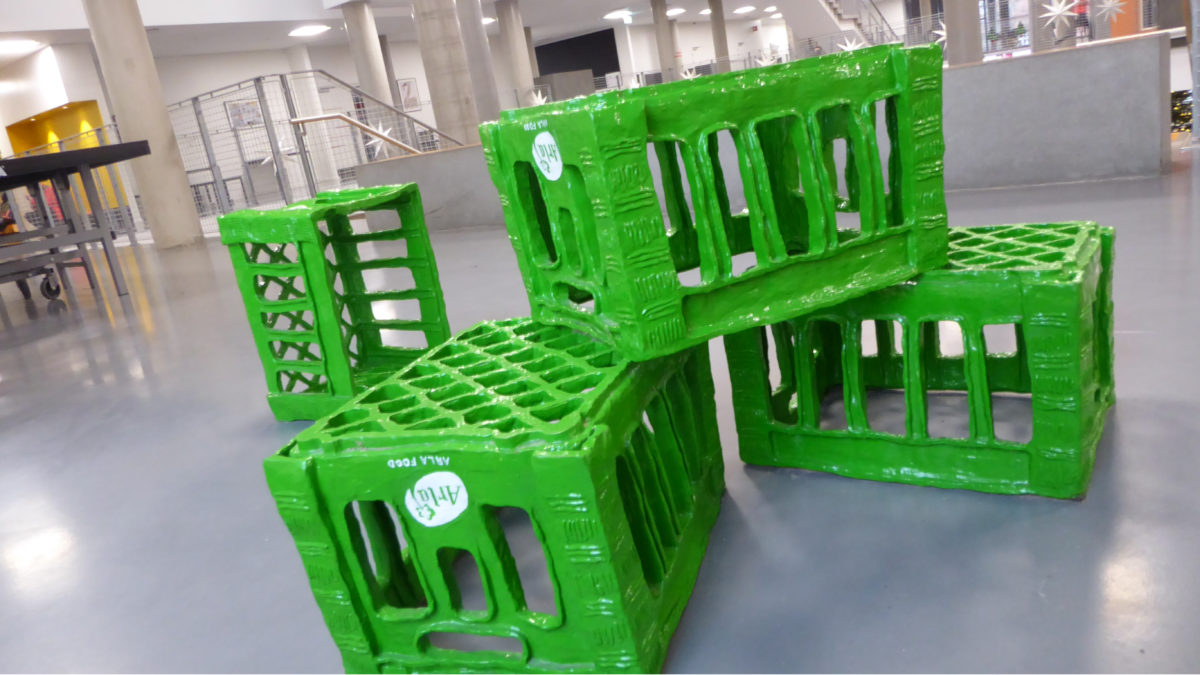
6. Selde
Known as the sculpture village, this place up north called Selde, is a utopia for public art lovers. Small and big sculptures, installations and interventions disrupt grass fields, gardens and facades. Even the fridges in the local food market have become a site for art, and the merchants’ unofficial art guides. The village has 350 residents, and it might seem sleepy at first sight. But don’t get fooled by the quiet atmosphere. There is lots of energy and willpower behind the Selde people. They were the ones who wanted their place to be infused with art back in 2013, at a time when the village was experiencing empty houses and a bad reputation. Today the sculpture village is still a collective community project and many of the artworks are realized in collaboration between international artists and the residents.
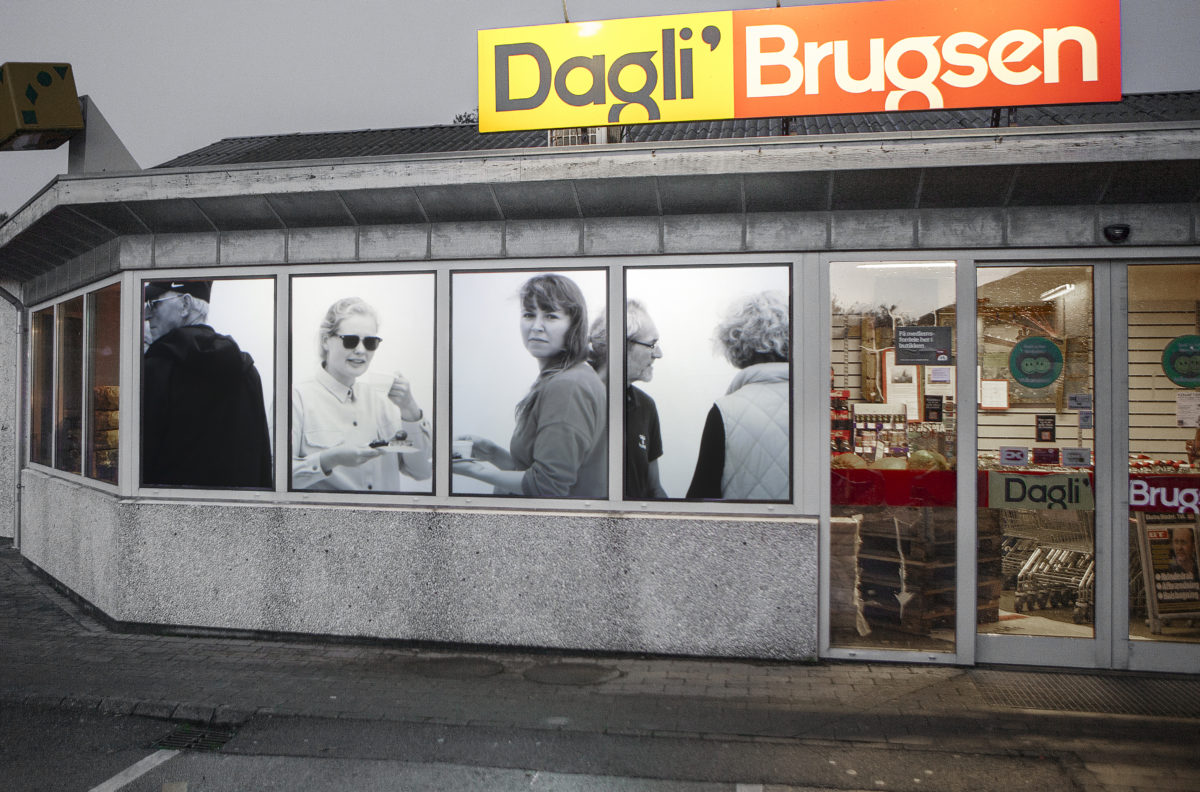
Did this article help you think of any specific artwork? Please share in the comment section on Instagram using the hashtag #artzealous and #anotherpublic.
The selected public artworks was part of the nation-wide exhibition “Værk Din Verden” (Work Your World) that I curated in 2018 for the art organization Raaderum.
About the author
Amalie Frederiksen is a curator and art mediator based in Copenhagen Denmark. She runs the art agency Another Public that do exhibitions, consultation and communication with the aim of building relations between art and the public and shape new situations and possibilities through contemporary art. Want to connect? Please follow Another Public on Instagram.
top image // 1: “Utopia” in Selde by Marianne Jørgensen. Photo@ Raaderum.

